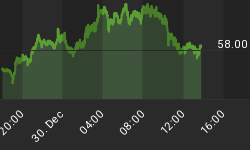Mortgage Bankers Association Chief Economist, Douglas Duncan, believes that mortgage activity is set to dip and that "there's no question that the decline in [mortgage] volume will reveal excess capacity". Although Mr. Duncan isn't painting on overly grim picture, it is worth pointing out that he offered this negative outlook more than 3-years ago...
Nearly Three Years of Insanity All But Over
As it would turn out, the so called 'excess capacity' in the mortgage industry wasn't shed in 2004, it was simply utilized to push more 'creative' mortgages.
"While most home buyers still opt for traditional fixed-rate loans, lenders are planning to introduce an even wider array of niche mortgages as the refinancing boom wanes and competition intensifies."
Creative Mortgages Fuel Home Sales -- Banks Push Variety of New Loans to Offset Rising Costs; the Price of a Missed Payment." Wall Street Journal, March 16, 2004.
 As the 'creations' in question - including 'interest only' and 'no doc' loans - helped people who could otherwise not afford a house become homeowners, some people warned early and often that rapid home price appreciation and risky loans were a dangerous mix for the real estate market. However, these analysts, including Robert Shiller, Dean Baker, Paul Kasriel, and 'The Economist', were largely ignored for being overly pessimistic. That is, of course, until now.
As the 'creations' in question - including 'interest only' and 'no doc' loans - helped people who could otherwise not afford a house become homeowners, some people warned early and often that rapid home price appreciation and risky loans were a dangerous mix for the real estate market. However, these analysts, including Robert Shiller, Dean Baker, Paul Kasriel, and 'The Economist', were largely ignored for being overly pessimistic. That is, of course, until now.
As Housing Boom Turns To Bust Policy Makers Press PANIC
As the U.S. housing market enters its bust phase policy makers have been quick to reiterate that the damage will be contained. In fact, the response to some relatively small blow-ups in the subprime market has been so quick that you have to wonder if what policy makers are really saying is they will not allow the carnage to spread.
Poole: "The possibility of a liquidity upset or crisis is a financial disturbance that may have some policy implications for the Fed to provide some liquidity" Fed's Stern says no spillover from subprime
Following Poole's suggestion of Fed help last week, Senate Banking Committee Chairman Christopher Dodd said yesterday that Congress "may need to do something much more quickly to provide some protection or you could end up with a lot of poverty and blight". The astonishing point to be made about the bailout being talked about is that while Dodd is quoting research reports and talking about "losing 2.2 million homes", the MBA "lists only 300,000 such [subprime] borrowers as being in foreclosure now". Dated numbers aside, doesn't it seem odd that the bailouts and promises to defend 'liquidity' may be set to arrive with less than 25% of the anticipated subprime bust complete? What is really going on here?
The U.S. Housing Market Is Too Important To Fail
Those that believed one of the greatest stock market busts in history would spark a serious U.S. recession were wrong - not about the stock market bust, but about how quickly the U.S. real estate market could manufacture a boom.
"We know that increases in home values and the borrowing against home equity likely helped cushion the effects of a declining stock market during 2001 and 2002." Greenspan. Feb 23, 2004.
Such is why with the U.S. real estate bust gathering speed so many policy makers are preparing to try and stop it in its tracks: there is no other major asset class left to inflate if the U.S. real estate market tanks.
Exactly when the U.S. housing market will reach some semblance of a bottom isn't the most important question at hand, nor is how far the carnage in subprime area will continue to spread. Rather, the real question is how will the debt-engorged U.S. consumer cope with the next major economic downturn given that their two largest and most important assets (stocks and real estate) are unlikely to generate boom returns going forward?
In short, it is worth reiterating that the insanity is over; that with tighter lending standards/regulations arriving the real estate mania will continue to unwind. And if recent events are any indication, the expectation is that Fed rate cuts and 'creative' ('preemptive'?) bailouts will soon start flying. In other words, times are sure to remain interesting as the winds of reason return.
Incidentally, amidst the landslide of optimism one of the few policy makers to offer even handed comments has been Federal Reserve Governor Susan Bies, who bluntly said last week that "This is not the end, this is the beginning." Bies will retire later this month.
"I haven't had this much fun since the NASDAQ started to deflate seven years ago." Baker
Consumers have become so accustomed to very liquid mortgage markets, where credit is available for almost any circumstance, that they are not aware this is unusual in the market. Somewhat tighter credit availability and somewhat higher interest rates are much more normal.
Keith T. Gumbinger, vice president of mortgage data publisher HSH Associates.
















